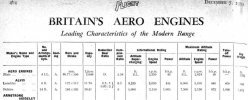Only if you have more factories; otherwise you'll have the same floor space building Hurris or Sea Hurris.
You can have more with the same factory space. This is because Boulton Paul would be building Hurricanes instead of Rocs and Defiants. I wrote as much in Post 14.
The specification that produced the Roc was issued in December 1935 and the first production contract was let in April 1937 so there's enough time to have Boulton Paul built Hurricanes enter service with the FAA at the same time as the Roc.
The first production contract for the Defiant was also let in April 1937 so while we're at it 87 Hurricanes should be ordered from Boulton Paul in April 1937 instead of the first 87 Defiants. IOTL the first production Defiant flew in July 1939 and the first 87 production aircraft were delivered between August 1939 & May 1940. However, as the Hurricane was ahead of the Defiant in development it would be reasonable to assume that the first Boulton Paul built Hurricane for the RAF would have flown in July 1938 and that the first 87 aircraft would have been delivered between August 1938 and May 1939 with the next 202 aircraft following between June & October 1939 as the second batch of Defiants (202 aircraft) was delivered between June & October 1940.
The first Boulton Paul built Roc flew in October 1938 and the 136 aircraft were delivered between February 1939 & August 1940. There isn't enough time to fly the first Hurricane built instead of the first Roc in October 1937 and deliver the 136 extra Hurricanes between February 1938 & August 1939 if the contract was still let in April 1937, but advancing the first flight by six months to April 1938 and the deliveries forward by six months to between August 1938 and February 1940 seems reasonable to me.
Or 136 extra Hurricanes could have been ordered in October 1936 (instead of April 1937) so they could have been delivered between February 1938 & August 1939.
And while we're at it . . .
The first 600 Hurricanes were ordered in June 1936 and Hawker delivered between December 1937 & October 1939. The Air Ministry also ordered 389 Hawker Hotspurs (from Avro) in June 1936 but they were cancelled and replaced by the orders for Defiants. ITTL we could
"cut out the middle man" and order 389 Hurricanes from Boulton Paul in June 1936. My guess is that the first Boulton Paul built Hurricane would have flown before the end of 1937 and that the 389 aircraft would have been delivered between early 1938 and late 1939.
400 Hawker Henleys were ordered (from Gloster) in June 1936 but the contract was reduced to 200 aircraft which were delivered between November 1938 and September 1940. Gloster received its first contract to build Hurricanes in November 1938 and the 500 aircraft were delivered between November 1939 and June 1940. With hindsight the Air Ministry should have ordered 400 Hurricanes from Gloster in June 1936 instead of the 400 Henleys and I think they could have been delivered between November 1937 and September 1939 due to the Hurricane being ahead of the Henley in development.
Meanwhile, 603 Gloster Gladiators were ordered by the Air Ministry including 98 that were built as or converted to Sea Gladiators. They were built under four contracts that were let in: July 1935 (23 aircraft); September 1935 (186 aircraft plus 16 added as replacements for aircraft diverted to export contracts for a total of 202), don't know other than it was in the 1937-38 financial year (78 aircraft); and June 1938 (300 aircraft). The 225 aircraft ordered in 1935 were delivered between February 1937 & February 1938 and the 378 aircraft ordered in 1937 & 1938 were delivered between September 1938 & April 1940. In fact the last 300 out of the 603 aircraft built to British contracts were delivered between March 1939 & April 1940.
ITTL the 225 aircraft ordered in 1935 would still have been built as Gladiators and delivered between February 1937 and February 1938. However, 378 Hurricanes would have been ordered from Gloster instead of the 378 Gladiators ordered in 1937 & 1938 and they would have been delivered between September 1938 & April 1940. All other things being equal 98 of these 378 extra Hurricanes would have been built as or converted to Sea Hurricanes.
747 Gladiators were built IOTL. That includes the prototype, 603 production aircraft built to British contracts and 143 were built to export contracts.* Some of the exported aircraft would have been Hurricanes instead of Gladiators ITTL too.
* Except that, only 560 were delivered to the RAF & RN and 186 were exported because 43 aircraft ordered for the RAF were
"diverted" to fulfil export contracts. That is 22 aircraft from the second order were delivered to Belgium and 21 from the fourth order of which 6 went to Norway & 15 to Portugal. The 186 aircraft doesn't include
"second hand" Gladiators i.e. aircraft that were delivered to the RAF and then exported.
